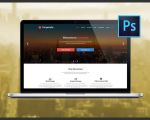
How I Built a Website That Transformed My Business
When I first ventured into the online world, I underestimated the power of a well-structured website. My initial attempt was a basic page with minimal information, and unsurprisingly, it didn't yield the results I hoped for. Realizing the need for a strategic approach, I embarked on a journey to build a website that would not only represent my brand but also drive business performance.
1. Defining Clear Business Objectives
Before diving into design and content, I outlined specific goals for my website. I wanted it to serve as a lead generation tool, provide information about my services, and establish credibility in my industry. This clarity guided every subsequent decision, ensuring that each element of the site served a purpose.
2. Choosing the Right Platform and Tools
I selected a content management system (CMS) that offered flexibility and scalability. Platforms like WordPress and Wix provided the necessary tools to customize my site without extensive coding knowledge. I also integrated analytics tools to monitor traffic and user behavior, allowing me to make data-driven improvements over time.
3. Prioritizing User Experience (UX)
Understanding that a user-friendly website retains visitors, I focused on intuitive navigation, fast loading times, and mobile responsiveness. I organized content logically, used clear calls-to-action, and ensured that the design was clean and professional. These efforts reduced bounce rates and increased user engagement.
4. Implementing SEO Best Practices
To enhance visibility on search engines, I conducted keyword research relevant to my industry and incorporated them naturally into the site's content. I optimized meta titles and descriptions, used header tags appropriately, and ensured that images had descriptive alt text. These strategies improved my site's ranking and attracted more organic traffic.
5. Creating Valuable Content
I developed a blog section where I regularly published articles addressing common questions and challenges faced by my target audience. This not only positioned me as an authority in my field but also provided fresh content for search engines to index, further boosting my SEO efforts.
6. Incorporating Social Proof
To build trust with potential clients, I included testimonials from satisfied customers and showcased case studies of successful projects. This social proof demonstrated the value of my services and encouraged new visitors to take action.
7. Ensuring Accessibility and Compliance
I made sure my website was accessible to all users, including those with disabilities, by following Web Content Accessibility Guidelines (WCAG). This not only expanded my audience but also demonstrated my commitment to inclusivity.
8. Continuous Monitoring and Improvement
Building the website was just the beginning. I regularly reviewed analytics to understand user behavior, conducted A/B testing on different elements, and updated content to keep it relevant. This ongoing process ensured that the website continued to meet business objectives and adapt to changing needs.
9. Leveraging Email Marketing Integration
By integrating email marketing tools, I captured leads through newsletter sign-ups and provided subscribers with valuable content and updates. This nurtured relationships with potential clients and kept my brand top-of-mind.
10. Reflecting on the Impact
Since implementing these strategies, my website has become a central component of my business's success. It consistently generates leads, educates visitors, and reinforces my brand's credibility. The investment in building a thoughtful, user-centric website has paid dividends in improved business performance.








